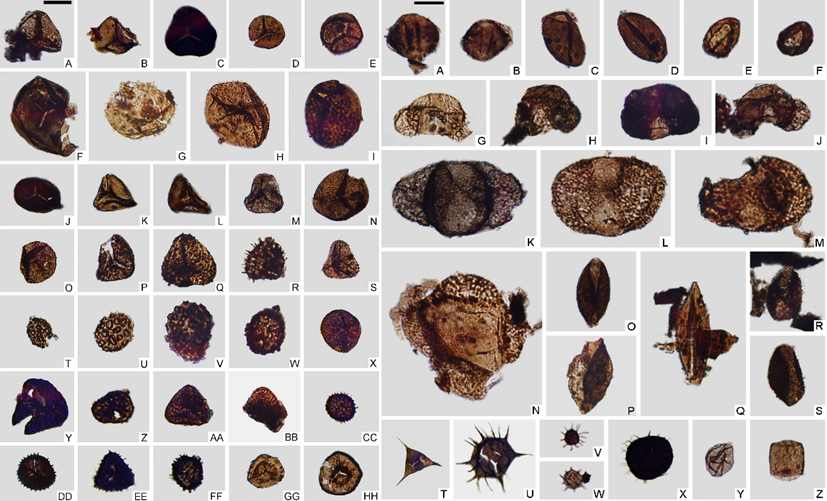
Triassic pollen, spores and acritarchs from southern Xizang(scale bar = 20 μm)
Triassic period is a time interval witnessing the significant global geographic changes with the rift of Gondwana and the expansion of Neo-Tethys. The southern area of the Qinghai-Xizang Plateau, which was located on the northern margin of Gondwana in the Triassic, is a key area to investigate these geological events. However, the Triassic terrestrial floras of this area and their phytogeographic affinities are so far poorly known.
This study was carried out by Dr. PENG Jungang and colleagues from Nanjing Institute of Geology and Palaeontology, Chinese Academy of Sciences, Prof. Vivi Vajda and Dr. Sam M. Slater from the Swedish Natural History Museum.
Palynological analysis was carried out on Middle to Upper Triassic strata from Tulong, Nyalam County, southern Xizang (Tibet), China. Four formal and one informal biozones based on stratigraphically important taxa and compositional changes through the succession. They are in ascending order: the Triplexisporites Interval Zone (Anisian), the Staurosaccites quadrifidus Taxon-range Zone (upper Anisian to lower Norian), the Striatella Interval Zone (lower Norian), the Craterisporites rotundus Taxon-range Zone (middle to upper Norian) and the informal ‘Dictyophyllidites harrisii zone’ (Rhaetian). They are correlative with the representative palynological sequences across Gondwana, contributing to the Triassic strata division and correlation in the Qinghai-Xizang Plateau.
Analysis on palynofloral composition and key taxa shows that the Late Triassic palynoflora of southern Xizang is similar to the Onslow palynoflora of Gondwana, but distinct from the North and South China palynofloras, calling for a new Late Triassic palynofloral province of China—Southern Xizang Palynofloral Province. This new province is a supplement to the Late Triassic phytogeography of China.
This study was funded by the Strategic Priority Research Program (B) of the Chinese Academy of Sciences, the Swedish Research Council and the China Scholarship Council.
Download:
